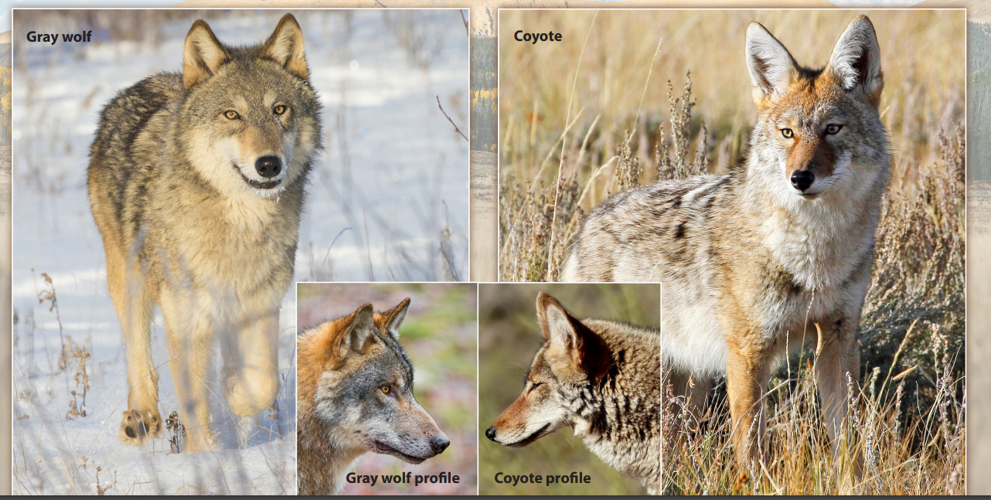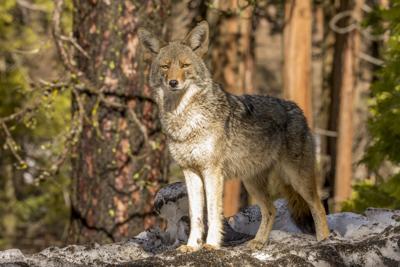Wolf sightings and the spotting of wolf tracks have become more common in Colorado in recent years, since a small pack traveled into the state from Wyoming in 2020. The pack were the first known wolves to call Colorado home since the species was eradicated in the 1940s.
That being said, it is still fairly unlikely to spot wolves in Colorado at this point. Other species have been misidentified in the past as wolves, including a group of Saint Bernards earlier this year. Coyotes, however, are a more common dupe.
The easiest way to distinguish a wolf from a coyote, is to observe its size. Wolves can easily be up to three times the size of coyotes, according to Colorado Parks and Wildlife (CPW).
"They [wolves] can measure up to 6 feet in length, including tail, and stand approximately 30 inches in height at the shoulder. Female wolves weigh around 70 – 80 pounds, while males weigh around 95 – 100 pounds," CPW's website reads.
Meanwhile, coyotes range from 15-45 pounds and measure up to 4 feet in length from snout to tail. They also stand at about 18 inches tall at the shoulder.
Facially wolves have noticeably blockier snouts, while coyotes' snouts are more narrow and long. Wolves also have rounded ears compared to coyotes' more pointed ears.

Photo Courtesy: Colorado Parks and Wildlife
Size is can also be helpful in identifying tracks.
"Wolf tracks are about 5 inches long by 4 inches wide, with four symmetrical toes and identifiable claws; coyote tracks are similar, but are only about half that size. The track paths of wolves usually show a direct, purposeful route," CPW said.
Again, it is unlikely to run into a wolf in Colorado, but if you ever do, do not turn and run. Instead, slowly back away and maintain eye contact with the animal. Also, do whatever you can to appear larger.
Report wolf sightings to CPW by filling out their 'Wolf Sightings Form'. This helps the department keep track of the state's wolf population.
STAY INFORMED: Sign-up for the daily OutThere Colorado newsletter here










(0) comments
Welcome to the discussion.
Log In
Keep it Clean. Please avoid obscene, vulgar, lewd, racist or sexually-oriented language.
PLEASE TURN OFF YOUR CAPS LOCK.
Don't Threaten. Threats of harming another person will not be tolerated.
Be Truthful. Don't knowingly lie about anyone or anything.
Be Nice. No racism, sexism or any sort of -ism that is degrading to another person.
Be Proactive. Use the 'Report' link on each comment to let us know of abusive posts.
Share with Us. We'd love to hear eyewitness accounts, the history behind an article.